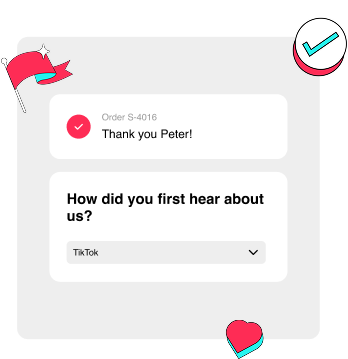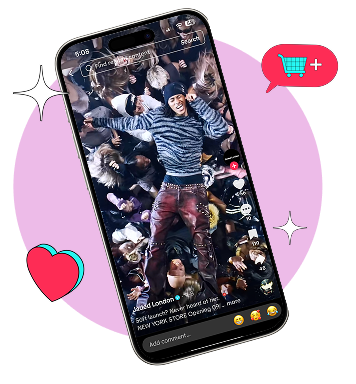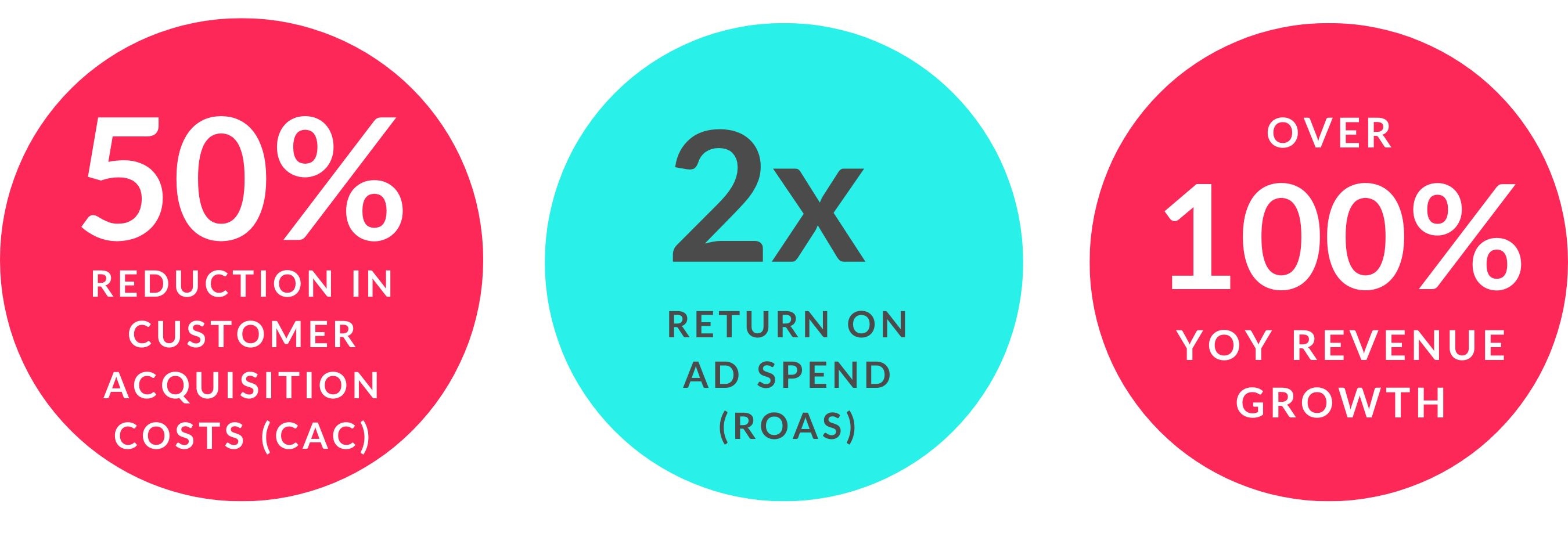Is your attribution lying to you? The simple fix that unlocked $3.3M
Most attribution models only tell part of the story. By listening to customers and pairing feedback with modern measurement, brands can finally see what truly drives results. Co-authored by Matthew Barbarasch, SMB NA Marketing Science Lead, North America, TikTok and Warren Jolly, CEO, Adquadrant

Getting a real read on your return on investment has never been more critical, but let's face it: traditional measurement models only tell half the story. While those old tools can offer some useful insights, they often miss the bigger picture and the full impact of where your marketing dollars are actually going.
This article, co-authored by TikTok and Adquadrant, introduces a fresh, simple way to think about measurement.
We’ll show you how combining direct feedback from your customers with smarter measurement tools can unlock a fuller understanding of your campaigns, instantly sharpen your strategies, and put the customer at the heart of every single decision.
Get ready to see your marketing performance in a whole new light.
The hidden flaw in your metrics
Imagine trying to navigate a modern city using a crumpled paper map from 1985. That's essentially what it's like using outdated methods like last click attribution today.
The basic problem is that these systems only give credit to the very last thing a customer clicked before they bought something. It's like saying the person who scored the final goal is the only reason the team won, completely ignoring all the passes, assists, and defense that happened earlier.
For brands, this means you're missing the whole story, the discovery moments and many times a customer saw your product on their phone or heard about it before they decided to buy.
On discovery platforms like TikTok, this gap is huge. Someone might see your ad, put their phone down, think about your product for a week, and then finally search for you directly. The old system ignores your ad entirely. As privacy laws get stricter and tracking clicks becomes nearly impossible, this "broken mirror" of measurement just shows you less and less of the truth.
The perfect storm: why tracking results is harder than ever
Attribution, figuring out which marketing dollars actually lead to a sale, was never easy, but now three major trends have slammed together to make it much, much harder. Think of it as a "perfect storm" for marketers:
The disappearing cookie 🍪
For years, marketers relied on third-party cookies to understand how customers moved across the internet. Today, major browsers and operating systems have introduced new privacy protections that limit this kind of tracking across the industry. While these changes are important for user privacy, they also make it harder for marketers everywhere to see the full customer journey and measure impact accurately.
Too many channels to count 📱
Customers are everywhere: Social, Google Search, streaming TV, podcasts, email, and more. Each channel has its own data system, and they often don't talk to each other. Trying to combine all those separate reports into one clear answer is like trying to solve a puzzle when none of the pieces fit.
Sales are happening everywhere 🛍️
A sale isn't just a simple checkout on your website anymore. Customers can buy from:
Your Direct to Consumer (DTC) site
Major online marketplaces
In app shops (like TikTok Shop)
This creates a complicated web where a user discovers you in one place and buys in another, making it nearly impossible for simple click tracking models to keep up. The end result? More places for customers to interact with your brand, but fewer technical tools to track those interactions. It’s why we need new ways to understand what's truly driving growth.
TikTok’s upper-funnel campaigns don’t just build awareness, they drive real revenue. But much of that impact happens beyond what click-based attribution can see. That’s where Marketing Mix Modeling comes in, revealing the true long-term value of upper-funnel activity.
When attribution gets it wrong: a real-world example

Bad attribution doesn’t just make your reports harder to read, it can completely change how you invest your marketing dollars. Underoutfit, a fashion retail brand, gained valuable insights from their experience. Their old multi-touch attribution (MTA) provider gave TikTok almost no credit, making the platform look unprofitable with weak ROAS numbers.
But when they switched to Fospha’s daily media mix modeling (MMM), the full picture came into focus. TikTok’s actual ROAS was 9x higher than what the MTA had reported. Those upper funnel campaigns that looked like wasted spend were actually driving serious revenue.
With this clearer view, Underoutfit scaled its TikTok investment and unlocked $3.3 million in incremental revenue that their old tracking system had completely hidden. The lesson? Legacy attribution can blind teams to what’s really working, especially on social platforms where customer journeys rarely follow neat, last-click paths.
What if the solution is just...asking people?

Instead of building more complicated tracking tech, what if the answer to the attribution crisis is incredibly simple: ask your customers.
That's the power of Post Purchase Surveys (PPS). You catch customers right after they buy, when their memory is freshest, to ask which touchpoints truly drove their discovery, consideration, and conversion.
Unlike those legacy systems, PPS is perfect for a privacy first world and gives you immediate, super useful insights.
PPS is so effective because it:
Captures the untracked: It finds out about organic content, creators, and word-of-mouth that normal tracking misses entirely.
Reveals the real first touch: It tells you exactly where a customer first heard about your brand.
Gives immediate, useful information: You get strategic input without waiting for long attribution windows to close.
Operates in a privacy-safe way: It works without cookies or third-party tracking.
To make this easy, TikTok has partnered with providers like KnoCommerce, Fairing, and Okendo to plug PPS directly into Shopify and other platforms, giving you a full view of your customer.
Once the richness of that feedback became apparent, not just attribution data, but insights into motivations, objections, and customer language, it became clear this wasn’t merely a measurement tool. Post purchase surveys emerged as a way to sharpen creative strategy, inform audience targeting, and enable more meaningful, data backed conversations about investment allocation.
From data points to deeper customer understanding
TikTok Post-Purchase Surveys (PPS) gives you a crystal-clear look at your customers. By asking shoppers a few quick questions right after they check out, you can figure out how they found you, how long it took them to buy, and which channels are actually doing the heavy lifting.
Here’s the kind of clarity PPS provides:
Where customers find you: See which platforms or ads were the real initial hook.
How fast they buy: Learn the typical timeline from discovery to completed purchase.
Which channels really work: Compare survey answers with your existing data to find channels that are underrepresented in your reports, helping you make much smarter ad spend decisions.
When you use PPS alongside other tools like media mix modeling, you get the most complete picture of your customer's journey. Combining direct feedback with data lets you make better decisions and plan your next move with real confidence.
The integrated approach
PPS fills in all the blank spots your old tracking tools never saw. It finally gives credit where credit is due:
TikTok's real power: People often discover you through organic videos or a favorite creator, but that action usually doesn't get "last-click" credit. PPS catches that initial spark.
Influencer & creator mentions: Those high-engagement creators you work with spark purchases that are completely invisible to standard tracking. Now you know their impact.
Word-of-mouth & peer sharing: Friends and social shares drive a ton of conversions that your reports simply never see. PPS brings those hidden drivers to light.
We position PPS as an enhancement to existing measurement stacks, not a replacement. Many clients already use last-click or MTA, and PPS fills the gaps those models miss.
Success story: Jaded London

This isn't just theory, it delivers massive returns.
The fashion brand Jaded London aimed to measure TikTok’s true impact on discovery and conversion, and optimize their total ad spend. They combined Post-Purchase Surveys (PPS) with Fospha's full-funnel measurement to capture both qualitative feedback and hard data.
The results were game-changing:

This is a TikTok case study and is solely for informational purposes. Past performance does not guarantee or predict future performance. All claims related to brand products including, without limitation, the effectiveness, sales, or quality of such products are brand-reported and not endorsed or verified by TikTok.
Future-proof your strategy
The goal of marketing attribution has never been about finding the last click; it's about finding the truth.
The lesson from brands like Underoutfit and Jaded London is clear: the most effective strategy for the modern era is to put the customer's journey, not a fragile cookie, at the heart of your measurement.
This starts with something simple: asking your customers where they discovered you (e.g., Post-Purchase Surveys). Then, it involves validating that direct feedback with sophisticated, holistic tools that can measure impact across all channels and the entire customer journey, such as Marketing Mix Modeling (MMM).
By building this layered, integrated measurement system, you move beyond guesswork and unlock the ability to invest your budget with absolute clarity. You'll finally be able to credit the discovery, the inspiration, and the moment of decision, seeing the full truth of your marketing ROI.
Interested in more insights like this?
Explore the full series:
The TikTok full-funnel gold mine your agency can’t afford to ignore
The AI uprising in advertising: TikTok is leading the charge
Grab the one-pager to learn more.
DownloadAbout the authors

Matthew Barbarasch, SMB NA Marketing Science Lead, TikTok
Matthew Barbarasch leads TikTok’s SMB North America Marketing Science team. He helps advertisers and agencies make smarter budget decisions through advanced measurement solutions that prove ROI and drive full-funnel growth. Before joining TikTok, Matt held marketing science and research roles at Meta and Millward Brown, where he partnered with leading agencies and brands to enhance campaign performance and deliver insights that shaped strategy. He is passionate about developing teams, fostering collaboration, and driving data-informed business growth.
Fun fact: Matthew is a triplet.

Warren Jolly, CEO, Adquadrant
Warren Jolly is the CEO of Adquadrant, an AI-powered growth partner helping modern consumer brands scale intelligently. A serial entrepreneur and investor, Warren launched his first internet company at 17 and has since built multiple eight-figure businesses. Under his leadership, Adquadrant has become a leader in AI-driven marketing, uniting brand intelligence, media, creative, and measurement into one adaptive growth system. Recognized on the Empact100 list, multiple Inc. 500 rankings, and as a 40 Under 40 M&A Advisor Award winner, Warren continues to invest in technology and marketing ventures while championing family as the foundation of strong leadership.
Fun fact: He lived in Japan for 6 weeks as a foreign exchange student during his teenage years, and credits this experience as one of the most profoundly impactful moments of his life.

Adquadrant is an AI-powered growth partner for modern consumer brands. We help high-growth companies scale by transforming data, creative, and media into a connected intelligence system that learns and optimizes daily. Our AI engine, Prism, unifies data across channels, identifies growth patterns, and powers real-time decision-making. Through this system, we’ve helped brands generate over a billion dollars in revenue and build lasting momentum in a constantly evolving market. The next era of growth is intelligent, Adquadrant builds the system behind it. Their recognition as a TikTok Badged Agency Partner highlights their success while their broader approach aligns with TikTok's Agency Advantage Program (AAP) by prioritizing data-driven insights and tailored strategies for their clients.
Sources:
Underoutfit: Fospha Internal Data, Q1 2024
Jaded: Fospha Internal Data, Q1 2024